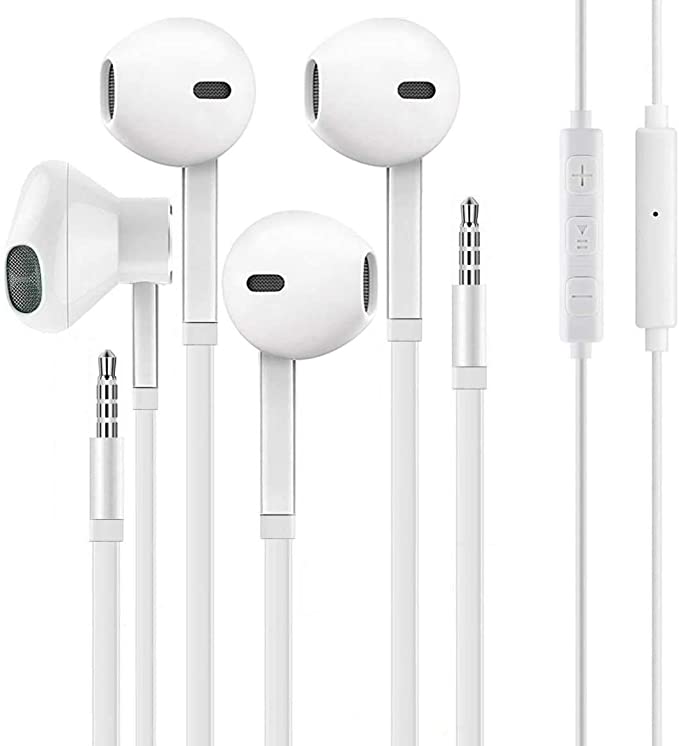Breathing Room for Your Ears: The Health & Physics of Avantree Resolve's Open Design
Update on Nov. 23, 2025, 8:12 a.m.
In the race for noise cancellation and deep immersion, modern headphone design has inadvertently created a problem: Ear Fatigue. By sealing the ear canal with silicone tips, we create a pressurized chamber that traps heat, moisture, and sound pressure. For many, this leads to discomfort, increased risk of infection, and the disorienting “underwater” sensation known as the Occlusion Effect.
The Avantree Resolve takes a radically different approach. It creates a category of its own: Wired Open-Ear Audio. By rejecting the seal and the battery, it prioritizes biology and physics over isolation. To understand why this might be the smartest choice for your workday, we need to explore the mechanics of how we hear and how headphones interact with our anatomy.

The Physiology of “Open” Listening
The core philosophy of the Resolve is Non-Occlusion. Unlike in-ear monitors (IEMs) that plug the canal, the Resolve’s driver unit hovers gently over the concha (the bowl of the ear).
Why does this matter?
1. The Occlusion Effect: When you plug your ears and speak, your voice sounds boomy and hollow because bone-conducted vibrations are trapped in the ear canal. By leaving the canal open, the Resolve allows these low-frequency vibrations to escape. The result? Your own voice sounds completely natural during calls, reducing voice fatigue.
2. Airflow and Hygiene: A sealed ear canal creates a warm, humid environment ideal for bacterial growth. The open design maintains natural airflow, keeping the ear canal cool and dry—a critical factor for users prone to ear infections or sensitivity.

Mechanics of the Ear Hook
Gravity is the enemy of earbuds. To keep a bud in place without jamming it into the canal requires a different support structure. The Resolve utilizes a Pinna-Support System.
The ear hook distributes the weight of the device (a featherlight 22 grams) across the ridge of the outer ear (the helix root). This shifts the mechanical load away from the sensitive skin of the ear canal. From a physics standpoint, this increases the contact surface area, reducing pressure per square millimeter to negligible levels. It is designed for “presence without pressure,” allowing users to wear them for 8-hour shifts without the “relief” sensation usually felt when removing headphones.

Acoustic Transparency vs. Isolation
The Resolve does not use microphones to pump in “Transparency Mode.” It uses Physical Transparency. Sound waves from your environment—a doorbell, a crying baby, a coworker—mix naturally with the audio waves from the driver in the open air before entering your ear.
This creates a Mixed Reality Audio experience that is acoustically seamless. * The Trade-off: Because there is no seal to trap bass pressure, the sub-bass frequencies (20-60Hz) will naturally dissipate. The sound signature is intentionally tuned for Mid-Range Clarity (vocals, speech), making it an exceptional tool for podcasts, audiobooks, and calls, but perhaps less suited for heavy EDM tracks. This is not a flaw; it is the physics of open-air acoustics.
The Reliability of the Wire
In a wireless world, the 3.5mm cable is a feature, not a bug. * Zero Latency: No Bluetooth encoding/decoding delay makes lip-sync perfect for video meetings. * Infinite Runtime: No batteries to degrade or die mid-call. * Signal Purity: The analog signal path ensures that your voice is transmitted without the aggressive compression artifacts often found in cheap Bluetooth microphones.

Conclusion: The Healthy Choice
The Avantree Resolve is a specialized instrument. It rejects the modern obsession with isolation in favor of integration. By respecting the biology of the ear—allowing it to breathe, self-regulate, and interact with the world—it offers a listening solution that prioritizes health and sustained comfort. For the marathon Zoom caller or the podcast addict, it is the acoustic equivalent of opening a window in a stuffy room.































